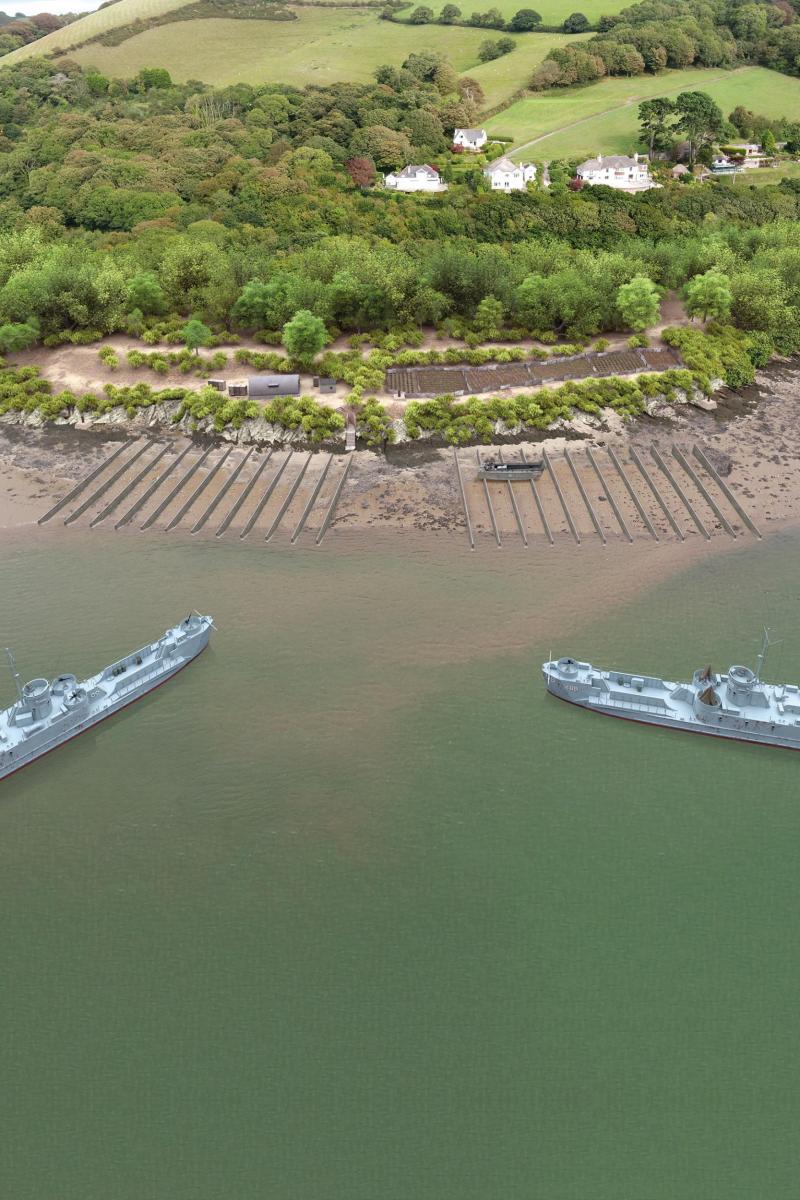In the 75th D-Day anniversary year, Wessex Archaeology was commissioned by CBRE Ltd, on behalf of Premier Marinas Ltd to carry out a programme of archaeological recording of a former D-Day landing craft maintenance facility. The site is located in a picturesque location on the River Dart to the south of Lower Noss Point, near Dartmouth, Devon. The recording was in response to a planning condition related to the development and expansion of the nearby Noss on Dart marina.
Operation Overlord
The assault phase of ‘Operation Overlord’ - codenamed Neptune - lasted for just over three weeks and by 30 June 1944 had landed over 850,000 men, nearly 150,000 vehicles and 570,000 tons of supplies on the invasion beachheads.
Sites used for the building, maintenance and repair of landing craft and landing ships were essential to developing and retaining a fleet capable of delivering Churchill's ‘great plan'.
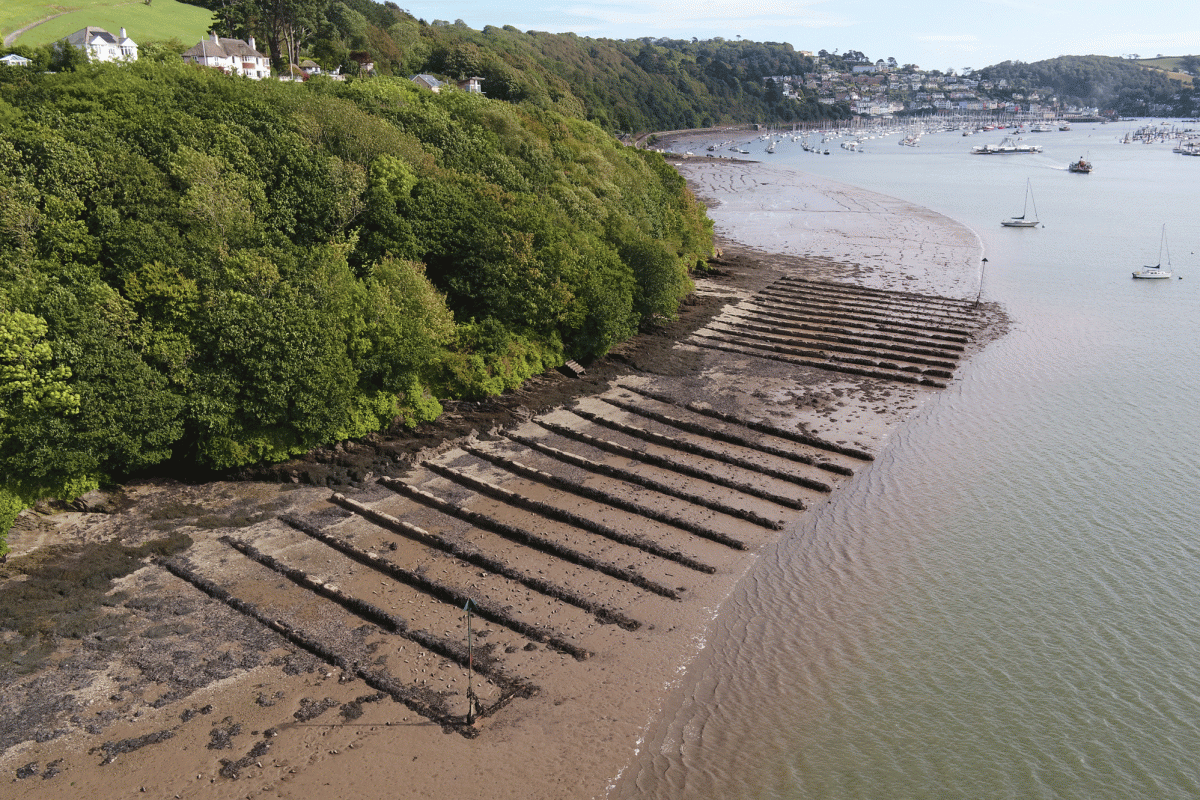

The site
The landing craft maintenance site at Noss on Dart is a Scheduled Monument that comprises both foreshore and onshore elements.
Its major components are two separate broadside hauling slips or grids which were designed to allow flat-bottomed landing craft to be floated over them sideways at high tide and then moored, coming to rest upon the slips as the tide fell and thus enabling inspection, scraping, and repairs to be carried out. In addition to the slips, three large concrete mooring posts and some onshore facilities survive. Wartime aerial photographs suggest allotment gardens may have been situated to the south of the site.
It is likely the British Admiralty were responsible for its design (similar slips can be found near Portsmouth) and the structures would have been built by civilian contractors, although it would have been used by the US forces and controlled by the nearby United States Naval Advanced Amphibious Base at Dartmouth. The south Devon coast around Dartmouth and Salcombe was heavily used by the US forces in preparation for the D-Day landings.
The site was in active use for a relatively short space of time - in the build-up to, during and immediately after the amphibious landings in June 1944. Although its precise construction date remains uncertain, it was certainly in operation from 1943 until late 1944 when it was handed back to the British. Post-war, the onshore area appears to have gradually become overgrown and the site forgotten.
When scheduled in 2003, it was stated that the ‘combination of foreshore and onshore facilities with this level of survival is considered to be unique’, probably due in part to its isolation and restricted accessibility. However, the site is vulnerable and deteriorating due to coastal erosion.


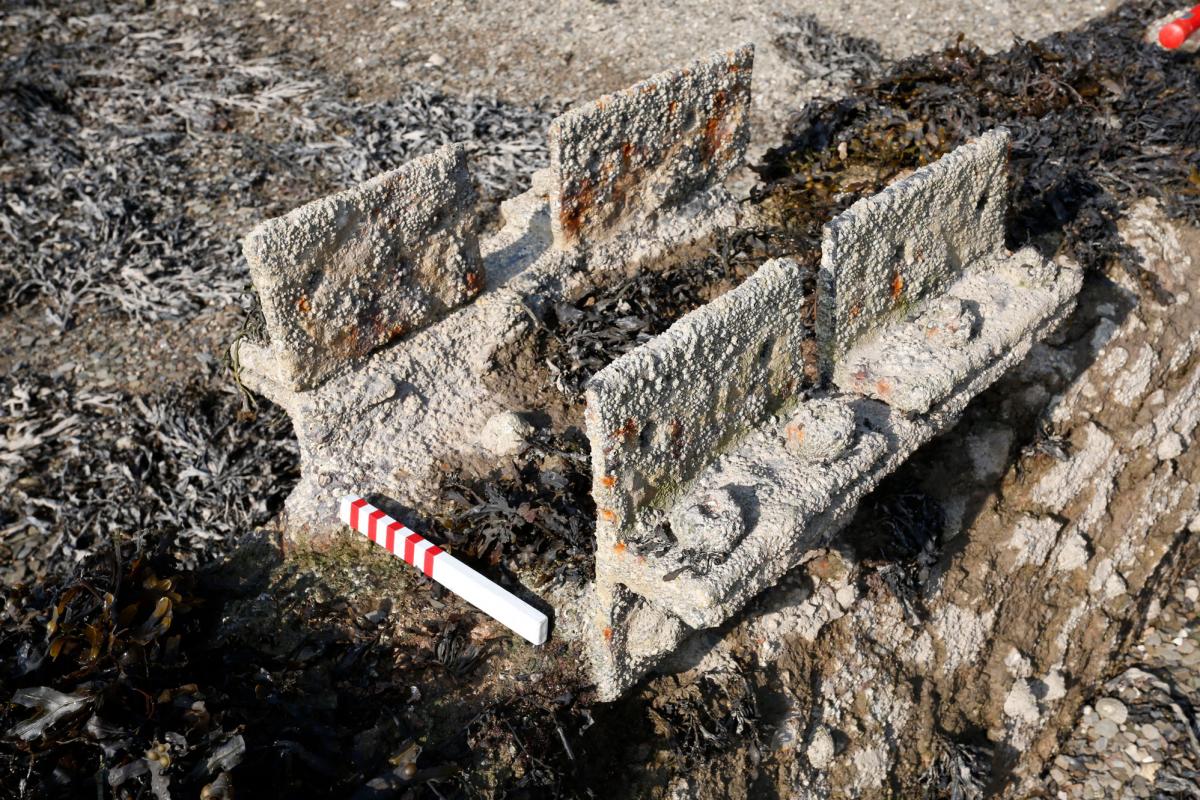
Our work
The initial phase of the project involved a condition survey in November 2017. This was followed by a programme of detailed documentary research in summer 2019 and a final phase of on-site recording in September 2019.
The research and recording was carried out by Grace Flood and Bob Davis of Wessex Archaeology’s Built Heritage team, and the work involved measured survey of the surviving structures, photography and analysis.
Additional UAV photography was carried out by Richard Milwain from Wessex Archaeology’s Geomatics team. Due to the intertidal nature of the site, access was restricted as the structures were only exposed for a few hours at low tide on limited days each month.
Once the site work had been completed, Cameron Bichener and Will Foster of Wessex Archaeology’s Studio took the survey information, photography and background research and created a model and reconstruction images of how the site might have looked in June 1944.
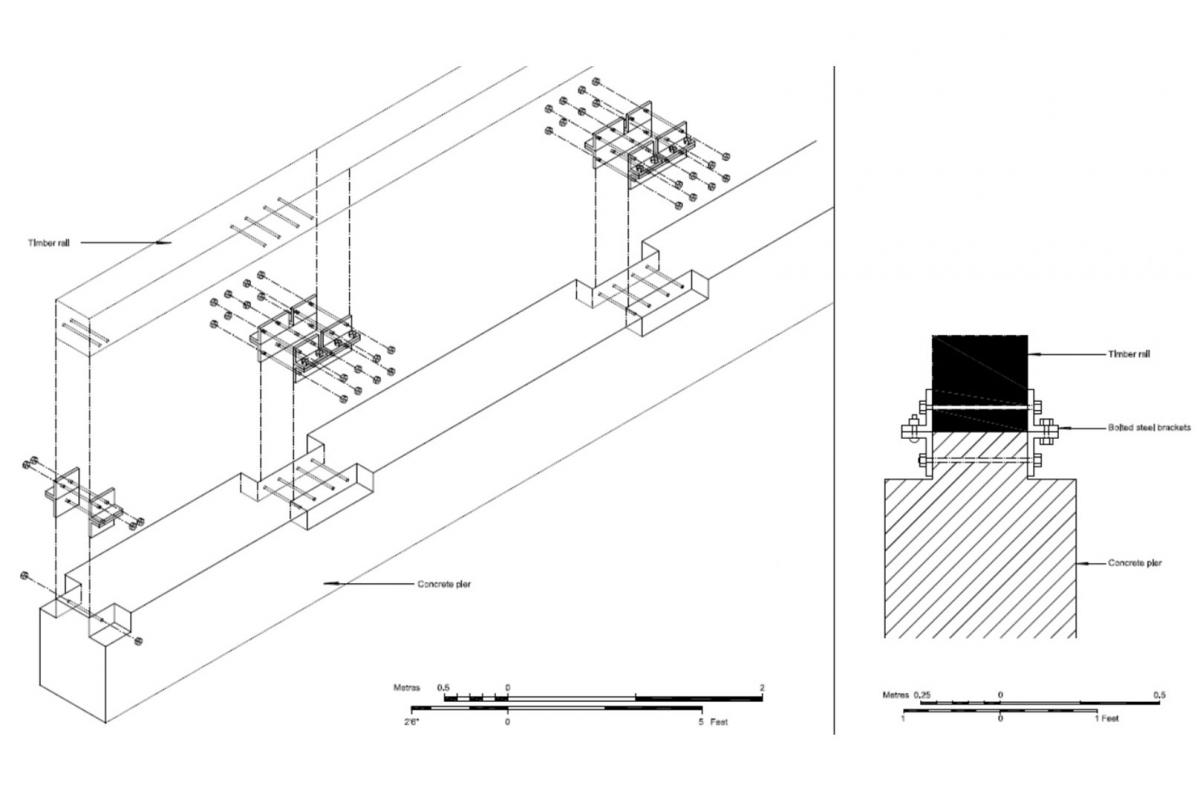
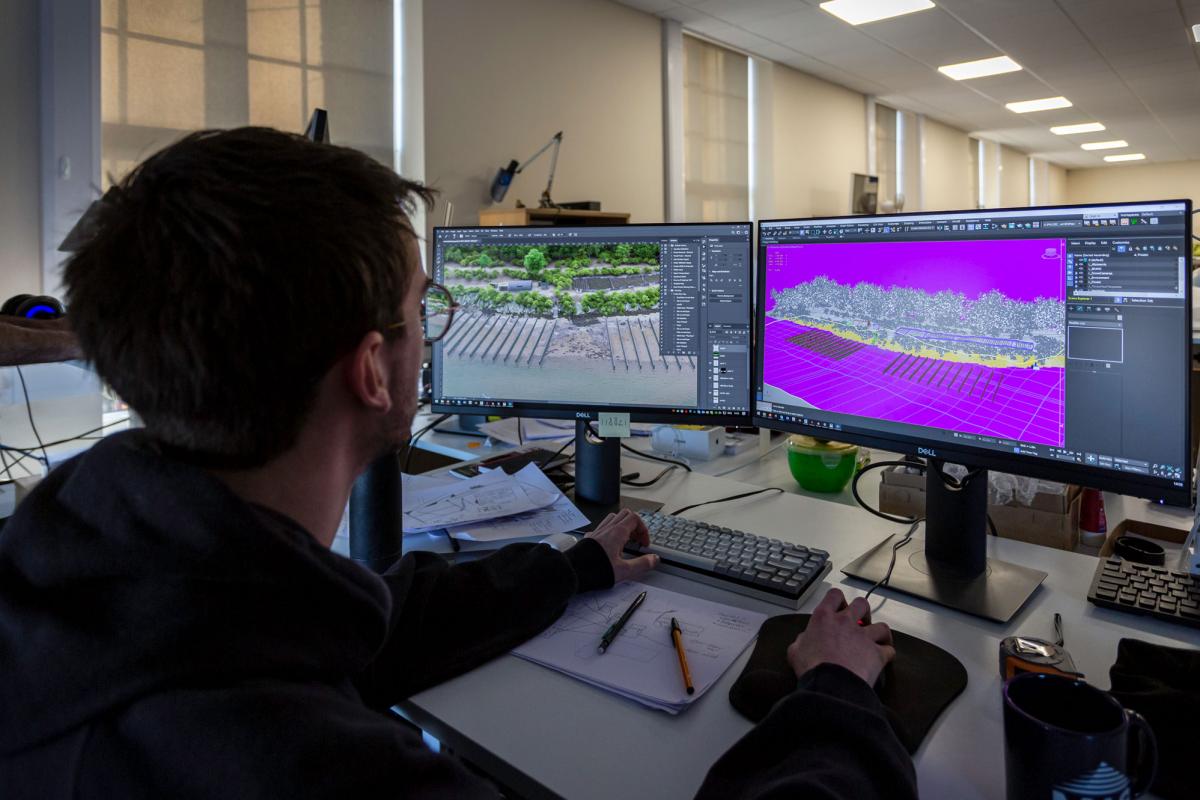
Our impact
Together with the background research information, these 3D images will be used to create interpretation boards to be displayed by Premier Marinas in the new Phillips Building in the redeveloped marina complex at Noss on Dart.
The results of the recording and research programme have provided an important record of this significant, although deteriorating, Scheduled Monument. This can be used as a baseline to measure the future condition of the surviving structures and inform the future management of the site.
